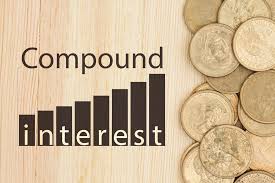The Power of Compound Interest: Building Wealth with Time and Patience
Albert Einstein reportedly called compound interest “the eighth wonder of the world.” He might not have actually said this, but the sentiment holds true for anyone who has reaped its benefits. Read More
To understand compound interest, imagine planting a tree. Initially, growth is slow, and it’s hard to notice any change day-to-day. But given time, the tree doesn’t just grow; it flourishes, with each branch sprouting new branches. In financial terms, your initial investment is the seed, the regular interest payments are the branches, and the interest those payments earn is the new growth that eventually outpaces the original size of the tree. A handy tool to understand compound interest is the Rule of 72, which provides a rough estimate of the time it will take for an investment to double at a given annual rate of interest. You simply divide 72 by the interest rate. For example, at a 6% interest rate, it will take approximately 12 years (72/6) for your investment to double. Time is the most crucial element when it comes to compounding. The earlier you start investing, the more time your money has to grow. For instance, if you start investing $100 a month at age 20, assuming an average annual compound interest rate of 5%, by age 60, you would have contributed $48,000 but could have over $150,000 in savings. If you start at age 30, you would need to invest significantly more each month to catch up. Consistency is key. Regular investments over time, even small ones, can lead to substantial sums. Reinvesting dividends or interest payments rather than spending them boosts the compounding effect because you earn interest on top of interest. Compound interest works both ways; it can work against you in the case of debt. Credit cards, for example, often compound interest daily, which can quickly balloon debt. Understanding this can motivate you to pay off high-interest debt quickly. The rate at which your investment compounds is pivotal. A difference of just 1% can significantly impact your wealth over time. This is why it’s important to find investment vehicles that offer the best returns without taking on unnecessary risk. Taxes can eat into the compounding of your investment. Investments like Roth IRAs, which allow your money to grow tax-free, can be beneficial. Additionally, inflation can erode the purchasing power of your money over time. Your investment’s return should ideally be above the inflation rate to ensure real growth in your wealth. Different investment vehicles compound interest at different rates. Savings accounts might compound monthly, while some bonds compound semiannually. Stocks that pay dividends may not compound in the traditional sense, but reinvesting those dividends into additional shares can produce a similar effect. Compound interest is a powerful force in finance, capable of turning modest savings into substantial wealth over time. It rewards patience and long-term thinking and punishes procrastination. By starting early, investing regularly, and reinvesting returns, you can harness the power of compound interest to build a secure financial future. Remember, the journey to substantial wealth accumulation is a marathon, not a sprint, and compound interest is your most reliable running mate. Understanding Compound Interest
The Rule of 72
The Importance of Starting Early
Regular Investments and Reinvesting Returns
Compound Interest in Debt
The Role of Interest Rates
The Impact of Taxes and Inflation
Compounding in Various Investment Vehicles
Conclusion

